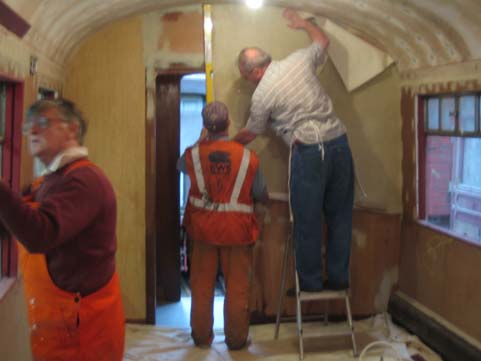
Before the final fitment of the plywood panels forming the lower half of the saloon walls, wiring was laid in by Robin Nelson to give the option of a power socket under each of the (fixed) tables which could be used for table lighting should the coach ever make it on to a "Wine and Dine" train. The circuit was arranged as two separate runs, one for one side of the coach and the other for the other side. The cabling was taken back to the main control panel inside the kitchen for later connection.
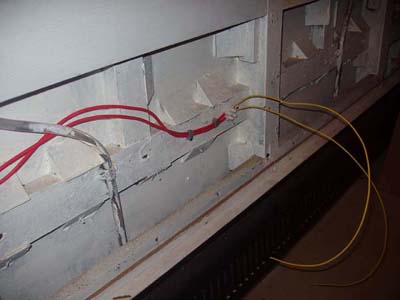
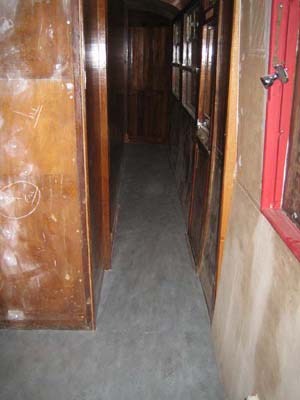
The linoleum was laid in late August 2007. Prior to laying the linoleum, the floor had to be skimmed. This took rather longer than expected to dry out so the contractor had to wait over a weekend before the linoleum could be laid. Welded joints were made to make sure the floor was watertight - the joint at the west saloon door is just visible in the RH photo. The outer edges where the linoleum meets the outer walls is sealed with a silcone filler to prevent moisture ingress.
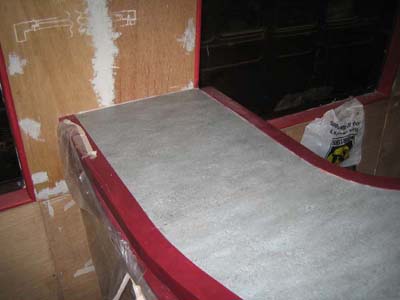
The bar top was also filled in with linoleum and Dave Simpson completed the sealing process by putting a small sealant fillet along the edges of the linoleum to seal against the outer and inner wooden edgings. The height of the linoleum infill is slightly lower than the wooden edgings - this should help to stop glasses etc. from sliding off the bar when the coach is in motion.
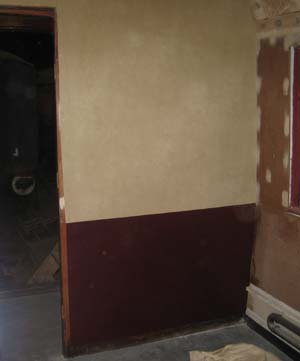
Dave Simpson and his team started to apply the leatherette cloth to the interior walls of the saloon. These photos show the
beginning of the work in early September 2007. The cloth is glued to the plywood using a specialist adhesive akin to heavy
duty wallpaper paste. The colour of the top cloth is beige(ish) and a maroon/burgundy colour is used for the lower section.
The colours don't show too well in these photographs. The team, from left to right, is George, Jim and Dave.
While marking out the horizontal dividing line between the two cloths it was noticed that the windows on one side appeared to
be higher than those on the other side. Application of a spirit level to the floor resolved this anamoly - the entire coach was
sloping to the north explained by the presence of the dynamo, regulator and entire battery load on that side. A series of wooden
wedges were hammered in between the solebar and the bogies on the north side and this succeeded in lifting the coach
sufficiently (about 3/4") to make the floor level and the marking out rather easier!
